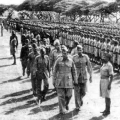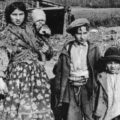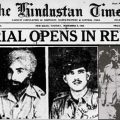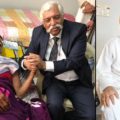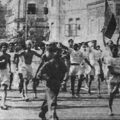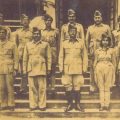Why 21st October is Indian Independence Day; Here Are Historical Facts
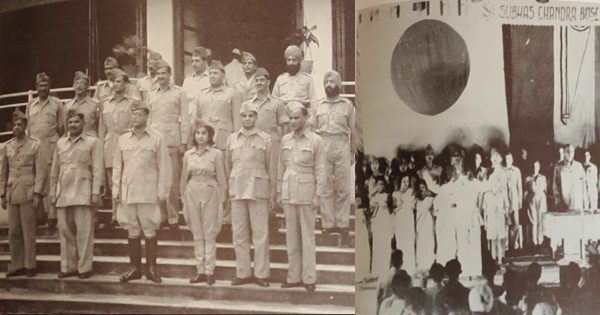
September 3, 1783 was the hour, The Treaty of Paris was signed by representatives of King George III of Great Britain and United States of America, officially ending the American Revolutionary War. Seven years ago then, however, in July 1776, representatives of thirteen North American Colonies of Britain declared themselves independent from the crown and formed The United States of America. Two days after the historic vote, on 4th July 1776, the Declaration on Independence was signed and since then Americans are celebrating this day as their Independence Day. Nothing to do with 3rd September 1783.
Closer home, as it became clear that erstwhile, promises would not live to say the day, the whole of East Pakistan began a spirited struggle for independence. The Independence of Bangladesh was declared on 26th March 1971 by Sheikh Mujibur Rehman. It was almost 9 months later, 16th December to be precise, after a series of Guerrilla warfare with military support from India that the Pakistani Army was defeated, their surrender ending the war.
The day of Declaration of Independence is thus not a function of doing away with the slavery. India however remains an exception. And it is not that we don’t have our own day of declaration.
That day is 21st October 1943 and not 15th August 1947.
We shall delve at length on ’21st October’ but first let us know why 15th August 1947 was chosen as the Independence Day. Well, Lord Mountbatten had that mandate by his parliament to transfer power by June 30, 1948. The Lord was in a hurry as he knew that by June 48, there would be no power left to transfer. As he confesses in the book Freedom at Midnight,
“The date I choose came out of the blue. I was determined to show, I was the Master of the whole event. When they asked had we set a date, I knew it had to be soon. I thought it had to be about August or September and I then went out to the 15th of August. Why? Because it was the second anniversary of Japan’s surrender”
To gauge the significance of 21st October, we need to travel back in time to a few years before Japan catapulted into the Second Wworld War on 7.12.41. Alongside Indians in India, our brothers in the Far East were also involved in various propaganda for her freedom. In Japan, Rash Behari Bose had started the Indian Independence League while a branch of the same organization was formed by Swami Satyanand Puri at Bangkok in 1936.
Sometime on the night of 7th Dec 1941, when the war of the Greater East Asia, as the Japanese termed it, broke, Mohan Singh’s 1/14th Punjab Regiment was guarding the Jitra area on the Malay Thai border. Unable to bear the onslaught, his battalion began to retreat.
His prying eyes came across a few pamphlets containing slogans such as ‘Asia for Asiatic’, ‘No Asiatic is our enemy’, etc. Thus started a long-drawn battle in his mind between allegiance towards his commission and moral obligation towards his own country. He finally gave in to his conscience, called up Major Fuziwara, head of the Japanese Intelligence and Sardar Pritam Singh, an influential leader of IIL Bangkok and surrendered to the Japanese on 15th December 1941.
Those were rampaging times for the Japanese and a meeting was held between the Commander in Chief of the Japanese imperial army Lt Gen Tomoyuki and the beleaguered Lt Gen Arthur Percival on Bukit Tama Hills, Singapore Island. It was agreed that on the 15th of Feb 1942 before 2200 hours Nippon time, the Poms would surrender Singapore. The British PoWs were sent to ‘Changi’ camp while the Indian ones gathered at Farrer Park. That was two days later i.e. 17th February 1942. Lt Col Hunt handed the PoWs to Major Fuziwara who in Capt Mohan Singh had found a suitable candidate to steer the fight for the liberation of India. By March, Japan had bulldozed Philippines and Malaya too.
Boosted by Japan’s aggression, a conference was called by Rash Behari Bose in Tokyo from 28th to 30th March 1942. The delegates left Singapore in two batches. The first batch of Swami Satyanand Puri, Pritam Singh, Mohd Akram Khan of the British India Army, Nil Kanth Ayer, Mr Ottagauru of Fuziwara, Kikan along with six other Japanese left for Tokyo on 11th March. It is pertinent to mention that Swami Satyanand Puri had a stature equal to Rash Behari Bose, especially in Thailand. Swamiji had handed over the charge of Thailand affairs to Sri Debnath Das as he headed to the epoch conference.
The second batch comprising of Niranjan Gill, N Raghavan, K P K Menon, S C Guho, Major Fuziwara and Capt Mohan Singh left on 16th March amidst stoppages at Saigon, Hainon, Taihoku and reached Tokyo on 19th March. Little did they realize on arrival that the first batch of IIL stalwarts was yet to arrive.
24th March was in fact Swami Satyanand Puri’s birthday when the plane carrying the first batch crashed in the hills of Taiwan leaving zero survivors. It was only two days later that the nervous Japanese arrived at Bangkok to deliver the devastating news to Debnath Das. He was advised to keep the news under wraps.
“Our leader and the soul of our Indians in Thailand has died and we are told not to tell anybody! What nonsense?”
The news spread like wildfire and the initial shock gave away to grief, suspicion and anger. Despite repeated pleas, the Japanese silence continued. No explanation, no commission of inquiry, no investigation. The bodies were never recovered. The conference could not have started poorer.
Rash Behari who presided was undaunted by the events. The conference decided to raise an Azad Hind Fauj. A more representative conference with hundreds of representatives of around Eleven countries was held at Silapkorn Theatre, Bangkok from 15th to 23rd June 1942 to consider further measures for Independence of India. A proper structure of the IIL was floated headed by a “Council of Action” steered by President Rash Behari and four members comprising of N Raghavan, Captain Mohan Singh, K.P.K Menon and Col Gillani. It was now or never and one needed to take advantage of the Japanese belligerence. After all, just a month ago then, on 10th May 1942, they had started bombing Imphal. There someone gave the idea that a gentleman was lurking somewhere in Germany and would be more than useful.
Point no 20 of the Bangkok resolution thus requested “Sjt Subhas Chandra Bose to be kind enough to come to East Asia and appeal to the Imperial Govt of Japan to use its good office to obtain the necessary permission from the Govt of Germany to enable Sjt Bose to reach East Asia Safely.”
The Indian Independence League was officially inaugurated with Headquarters initially at Bangkok and then shifted to Singapore in April 1943. The Indian National Army was of course had a formal opening earlier on Sept 01.1942 under Capt Mohan Singh, G.O.C.
The Bangkok resolution ran into rough weather; few members resigned as demanded by Japanese. Unfortunately, the Japanese were delaying the acceptance of the Bangkok resolutions including management of the properties of absentee Indians in Burma. Mohan Singh had a big fall out with Rash Behari and expressed the possibility of disbanding INA in Nov 1942. His open defiance with the President “Council of Action” made Rash Behari take strong exception to his activities. Singh dissolved his INA in December 1942 but simultaneously he was dismissed by Rash Behari and was demoted to an ordinary soldier. INA was thus still breathing although in tons of discomfort.
In April 1943, another conference was held at Singapore and the entire Independence movement was placed on a war footing. Amidst gasping eyes and ears, they announced that Subhas Bose hoped to be with them in another two months’ time. Bose then was in high seas almost alone in an U180 in the midst of another daring and unheard adventure.
Bose arrived at Singapore on 2nd July 1943 after completing the perilous journey from Kiel to Sabang onwards to Tokyo. Two days later Rash Behari formally handed over Presidentship of the IIL. The INA was revived and the Rank of his Supreme Commander was a natural progression. The Energy of the beleaguered had arrived.
As a student of revolutions in particular, Bose felt that the lack of a National Army and a National Government were two biggest hindrances in her fight for freedom. The armed forces of Nippon were instrumental in revitalizing the Indians in East Asia into reorganizing IIL and INA, thanks to their brilliant victories. He wanted to give birth to a Government out of the league for the purpose of launching and directing the final freedom struggle. Bose took inspiration from similar Provisional Governments set up by the Irish in 1916 and the Czechs during the last world war. When the Provisional Government is transferred to Indian soil, it will assume the functions of a normal government operating in its own territory. The formation of the Government would be the precursor to the final struggle.
That day, i.e. 21st Oct 1943 was the momentous occasion when the Provincial Government was formed by Netaji Bose. The Govt was recognized by as many as eleven countries including Japan, Burma, Italy, Germany and the Philippines. At five minutes past midnight on 24th Oct 1943, the Provisional Government declared war on Britain and the United States.
“This declaration of war is not a propaganda stunt. We shall prove by our actions that we mean what we say. When the Azad Hind Fauj launches its fight, it will do so under the leadership of its own Government. Indian liberation shall be achieved by Indian effort and the sacrifices of its own Fauz.”
The Govt apart from its well-structured armed forces, including a women wing, had its own Bank too. Up to the arrest of Mohan Singh, the Indian National Army consisted of three Guerrilla Brigades (Azad, Nehru and Gandhi), a Field Group, and a secret service group. Under Subhas, one more brigade reluctantly named Subhas, started.
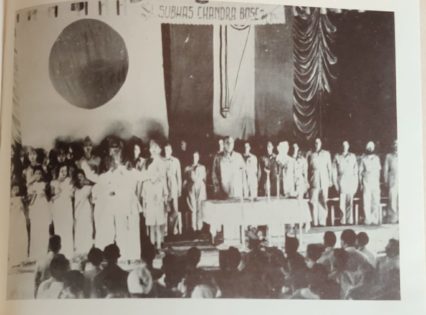
The National Anthem sung on the occasion of the Provisional Government on 21st October 1943.
The broad composition of the Azad Hind Fauz consisted of Headquarters, Hindustan Field Group, “Sherdil” Guerilla group, special service groups, Intelligence group and Reinforcement Group. Most of the Guerrilla Division were under Division 1 led by Gen Zaman Kiani. Under him was Inayat Kiani with his Gandhi Brigade, Gulzara Singh of Azad Brigade and Shahnawaz Khan of Subhas Brigade. The Nehru Brigade of Gen G S Dhillon was under Div 2 led by Gen Aziz Ahmed Khan although as per one report, the Nehru Brigade was also under Gen Zaman Kiani. The third division mainly consisted of Territorial forces under G R Nagar. The Propaganda and publicity department also were not to be left behind with four Radio Stations and two newspapers. The education of Indian children was a priority with this Government. National schools were run by the IIL in all the territories, around 65 of which were in Burma alone.
The Government had its own bank too with Debnath Das as the Chairperson and A. Yellappa as the Branch Governor. Along with the Korean supposed Central Bank ‘Bank of Chosen’, the Azad Hind Bank was the only Japanese aligned Bank that surfaced in Burma during the war. Established in April 1944 at 94 Park Road Rangoon, the bank which was also sometimes referred to as the ‘Indian National Bank’, was established to fund the operation of the Government. The Bank with a shareholder bank with a capital of Rs 50 lacs was registered under the Burmese Laws and was immensely successful in harbouring patriotic emotions in those Indians having valuable and fungible assets including gold, jewellery and Indian currency. The Bank raised some 215 million Indian Rupees in Burma including 150 million from Burmese Indians alone. And people were giving all they had, surrendering to Netaji’s charms. When on 19th May 1945, the Bank was sealed, a sum of Rs 30 Lacs remained as balance.
The Government in the meanwhile had independently ruled Andaman and Nicobar Islands and also the Ziawadi Estate in Burma. So good was its administration that a contingent of 6000 INA men was left behind by the British for protection of the civilian consequent to Bose’s defeat a year later. Rangoon had no police force of their own.
On the 4th of February 1944, Azad Hind Fauz went into action for the first time on the Arakan Mountains and Taung Bazar was captured the same day. With the advancement of the Japanese Army into Burma, the INA transferred its Headquarters to Rangoon. Netaji had made a clarion call to all and sundry to be a part of the journey. Pamphlets were in massive distribution and that led an inspired local movement, Praja Sammaleni, of the Manipuris to join the INA en-masse.
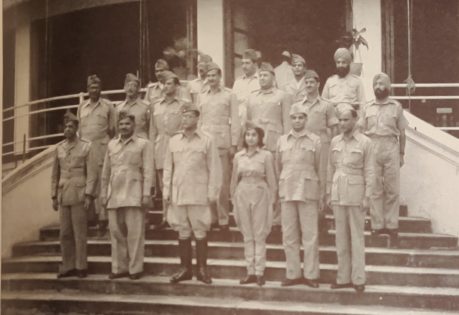
Netaji Bose with his Cabinet and Advisers.
Sactabin in the Kaladan was captured on 1st March and four days later Kalan was occupied. Fort White was reduced on 8th and the entry in India through Manipur was cleared with the fall of Lanacot on 12th March. On 18th March 1944 came the news that the Kennedy Peak on the Indo Burma Frontier bordering Ukhrul was occupied by the Subhas Brigade under Shahnawaz Khan. The next day early morning they hoisted the National Flag for the first time on Indian soil. Toungjam and Ukhrul gave in on 20th and 21st March prior to the famous battle of Shangsak on 24th.
The joint forces kept Kohima under their control for 21 days blocking all land traffic between Imphal and the rest of the country. During the same time from the South Eastern side of Manipur, the INA attacked from the Tiddim side to reach Imphal. Finally on 18th April (some say 14th), the famous Moirang capture took place under the aegis of Col Shaukat Ali Malik.
Simultaneously from the East, through Moreh and Pallel, the Gandhi Brigade under Inayat Kiani, was also rampaging towards Imphal. Almost a fortnight prior to Moirang, Moreh fell on 31st March. The very next day Kabaw and Tamu were captured. Both Tengnoupal and Pallel were taken over on 20th April almost at the same time as Moirang. Divisional Head Quarters of the Provisional Government was set up at Tengnoupal where Governor designate Manipur, Col A C Chatterjee resided.
By the end of May, Imphal was surrounded from all the four sides within a radius of 8 miles and fall of Imphal seemed imminent. It was even reported that the British were contemplating retreat and some of the Military officials had already evacuated. On the other hand, the INA Nippon combine was also encountering heavy casualties from lack of supplies of ration and ammunition and a deluge of monsoons. Thus, while the INA and the Japanese force started their retreat, little were they aware that the enemy was also contemplating similar action. This could be termed as an intelligence failure.
This battle of Imphal/Kohima triumphed over more celebrated battles of D Day and Waterloo and was chosen as Britain’s greatest battle in History in a contest organized by the National Army Museum, London.
Consequent to the INA’s surrender, one of the most high profile trials were the Red Fort Trials involving mainly three PoWs Capt Shahnawaz Khan, Lt G S Dhillon and Capt P K Sehgal. Among many arguments resorted by the defense lawyers led by Bhulabhai Desai, almost all primary arguments focused on the fact that the Provisional Government was an organized Government to whom the whole of two million people owed allegiance and had even compared this Government with the Axis powers.
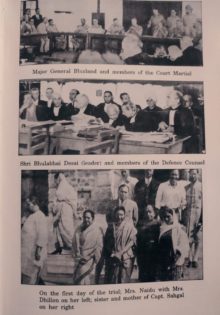
Glimpse of Red Fort Trials; Source: From the book ‘From my Bones’ by Padma Bhushan Col Gurbakhsh Singh Dhillon.
The patriotic fervor generated during the trials were never seen before types prompting the celebrated British Mi5 agent Hugh Toye to infer that there can thus be little doubt that the Indian National Army, not in its unhappy career in the battlefield but in its thunderous disintegration, hastened the end of the British rule in India.
Authentic documents from British archives declassified in 1971 having signatories such as the Viceroy Field Marshall Viscount Wavell, the CinC Sir Claude Achinleck and other functionaries of the Intelligence Department and the then Secretary of State for India Lord Pethick Lawrence throws the actual reasons of their ultimate decision of quitting India at the earliest. These seminal documents, apart from the famous Atlee interview to Justice PB Chakraborty in 1956, are of top British Authorities who were directly involved with the final decision of grant of Independence. The fact can’t be kept under wraps for too long that the British left India in a hurry because of Bose’s influence and the Indian National Army.
Are we all convinced now that we had a proper Government as early as 1943? Prime Minister Narendra Modi certainly was.
PM Modi accorded due recognition a couple of years back from the remnants of the Red Fort when at exactly 21.56 minutes of his speech he referred to Netaji as “Azad Hind Sarkar Ke Pehle Pradhan Mantri” and at 22.22, he recognized Azad Hind as “Akhund Bharat Ki Sarkar”. That was the closest recognition of Netaji as India’s First Prime Minister.
Today some are of the opinion that 21st October ought to be the Independence Day. Tomorrow many others might feel the same. It is indeed time to rewrite history and let the present generation be aware that the significance of this day is no less than 15th August or 26th January.
References:
1. Fiery Dragons by Sean Turnel
2. The Hidden Truth – Roger Beaumont
3. INA by Kusum Nair
4. Soldier’s Contribution to India’s Independence: General Mohan Singh
5. Interactions with locals and Professor of Moirang College (Dr Madhu, Rajeshwar Yumnam).
Images courtesy: Hugh Toye.

